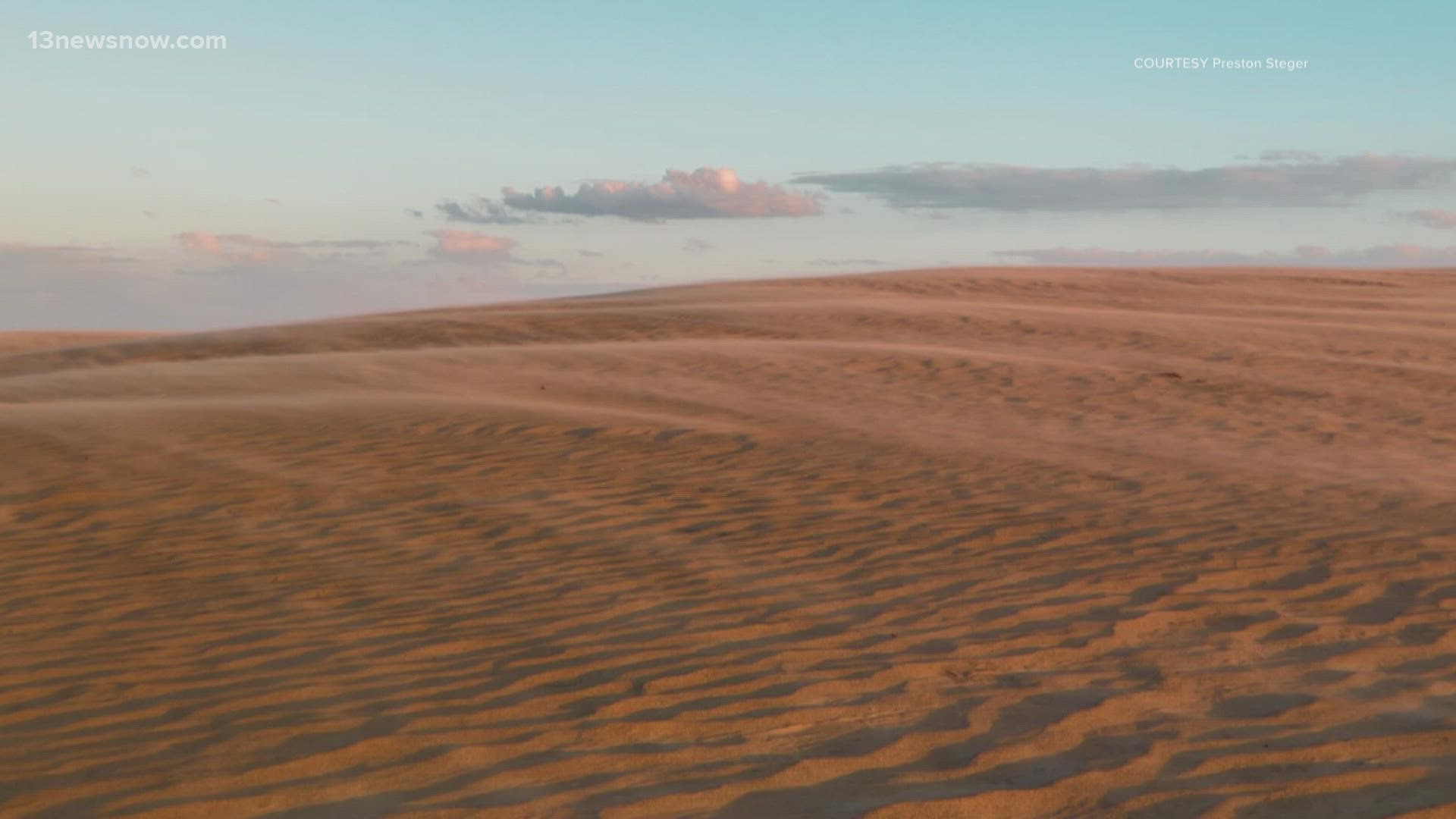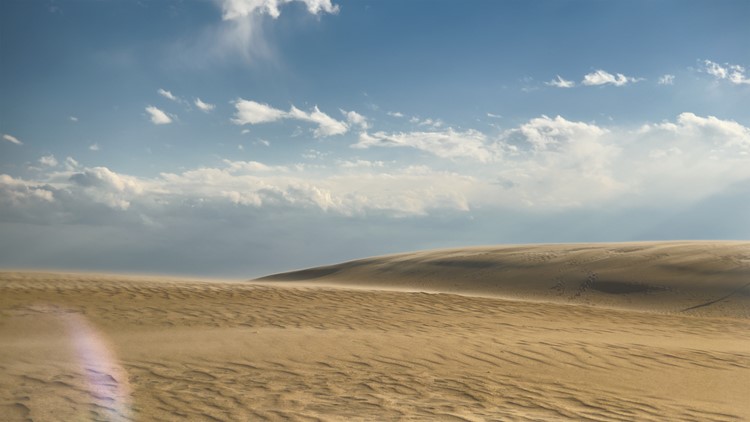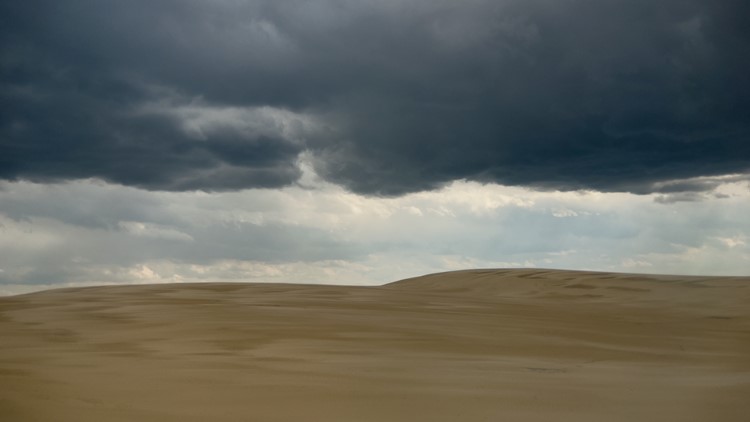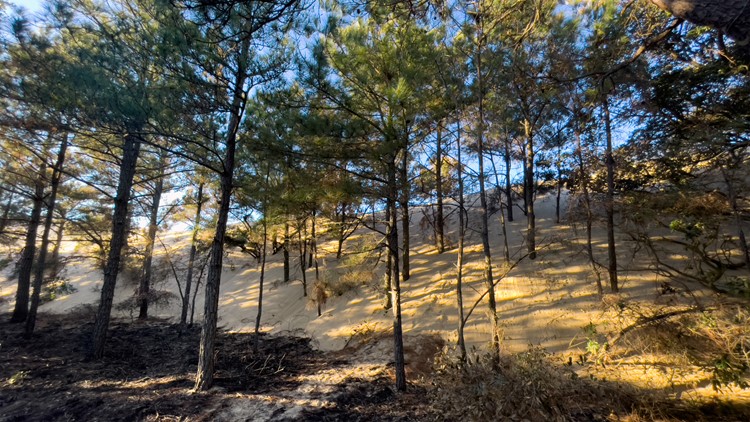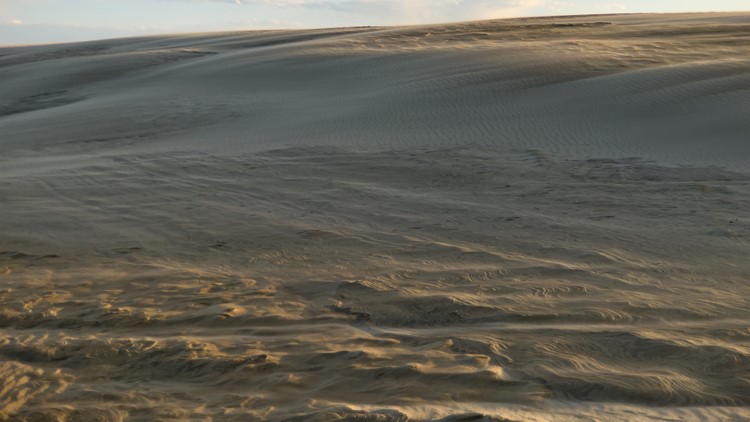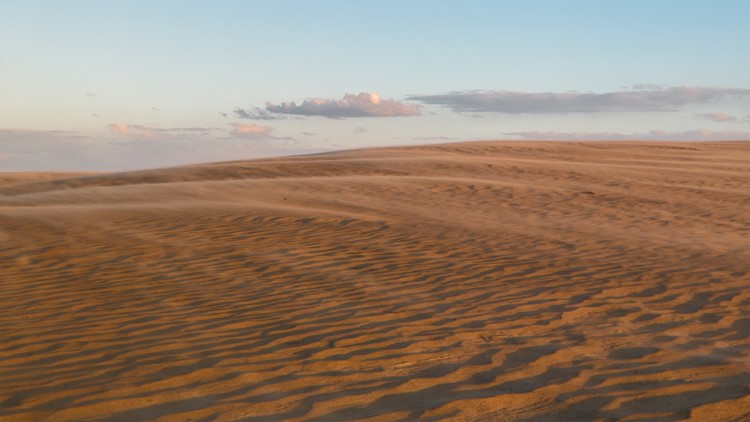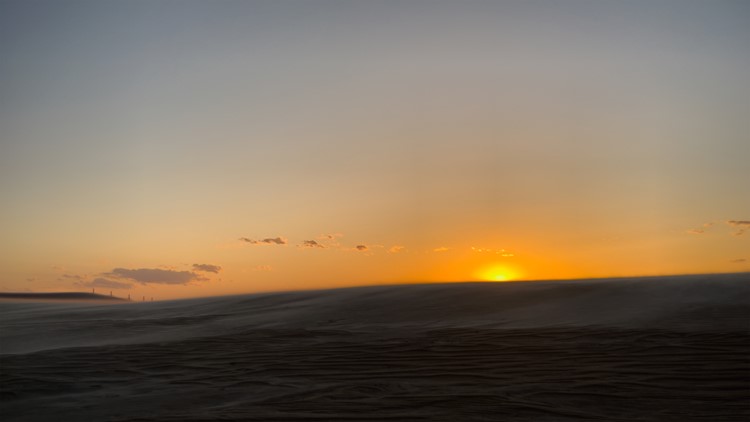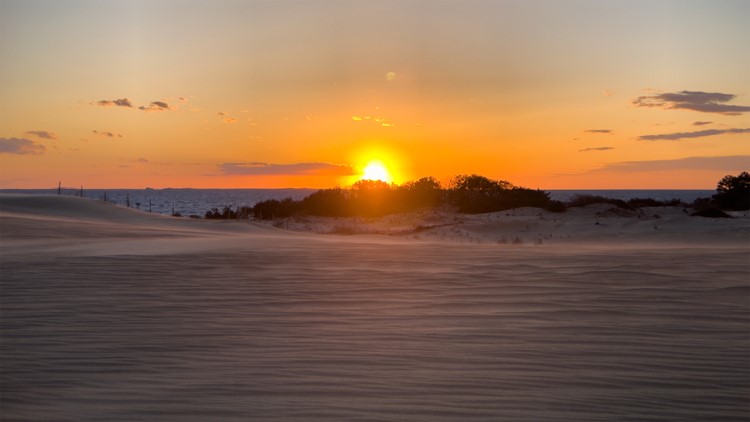NAGS HEAD, N.C. — Sometimes, you find a place that just seems out of this world.
If you're looking for a day trip like that, Jockey's Ridge State Park, located on the Outer Banks of North Carolina, has the tallest "living" sand dune on the East Coast.
The 426-acre state park is comprised of sand dunes that stay "alive" by continuously changing in shape and size, along with the maritime forest and Roanoke Sound, which provide habitats for land and aquatic wildlife. There's an estimated 30 million tons of sand that can reach 140 degrees during summer.
According to state officials, Jockey’s Ridge had the most visitors out of any North Carolina state park in 2021, for good reason.
When standing in the middle of this Outer Banks gem, you might think you’re in the Sahara Desert or on the planet Tatooine from the "Star Wars" universe. Park Ranger Austin Paul described Jockey's Ridge as a peaceful area for exploring and learning about the natural world.
Photos: Exploring Jockey's Ridge State Park on the Outer Banks
"We have thousands of motorists on [Highway] 158, and all you have to do is turn right into our park entrance and all of the sudden, it's a different world," Paul told 13News Now.
Just an hour and a half from Norfolk, Jockey’s Ridge is an excellent option for a day trip away from Hampton Roads that will take you to a different world. Here are some things to know before you go.
Seasonally-changing winds keep the sand dune 'alive'
The wind has the greatest impact on the dunes at Jockey's Ridge in a natural process that could be described as tug-of-war.
The predominant wind direction throughout the year comes from the northeast blowing to the southwest. But during the warmer months, the predominant wind direction switches to the southwest blowing to the northeast (The National Weather Service defines wind direction as the true direction from which the wind is blowing at a given location).
Because of these seasonal changes, the sand is blown back and forth.
“Whether you are down in the low valley areas or up on the ridge, you can scan the landscape and see how truly the winds are moving and ultimately sculpting the dunes,” Paul said.
What keeps the dunes from blowing entirely, though, is the sand acting as a "sponge" or "wick" for water.
“If you go up on the top ridge or down in the low valley areas, if you scratch down a couple of inches, you’ll find moisture,” Paul said.
Because of this, it's only the top layers of sand shifting.
The sand dunes resulted from the erosion and accumulation of three minerals, mainly quartz, over millions of years. Thousands of years of high winds, hurricanes and storm surges then brought the individual sand grains onto the land.
Changes are still happening today as the predominant winds gradually shift the dunes towards the Roanoke Sound. The evolving landscape has previously caused some issues for people living nearby.
The 2018 hurricane season shifted the sands several meters, encroaching onto people's backyards. In response, crews worked to relocate 200,000 tons of sand from the southeast side of the park to the north side.
The sand isn’t the only thing “alive” though. This place is abundant with different plants and animals.
Some of the animals found within the park are 10 snake species, coyotes, red and gray foxes, opossums, white-tailed deer and around 160 types of birds seen throughout the year.
Because of the shifting sands, vegetation doesn't grow on the big dunes, but the lower valley areas have thickets — dense areas of vegetation — that provide a habitat for animals in the park, most suitable for mammals.
Some of the plants you’ll see are wax myrtle, loblolly pine and live oak trees in the forest, and marsh grasses by the Roanoke Sound.
A satellite view of Jockey's Ridge State Park from Google Maps:
Playing in this big OBX 'sandbox'
Because of the wind, the sand dunes are ideal for hang gliding and flying kites. Outdoors company Kitty Hawk Kites offers a hang-gliding school on the grounds of the state park.
Sandboarding is also popular at Jockey's Ridge (think snowboarding but on sand). According to the park's website, you can bring a board with or without bindings, but cardboard will not work on the sand. Boards are also available for rent through Kitty Hawk Kites.

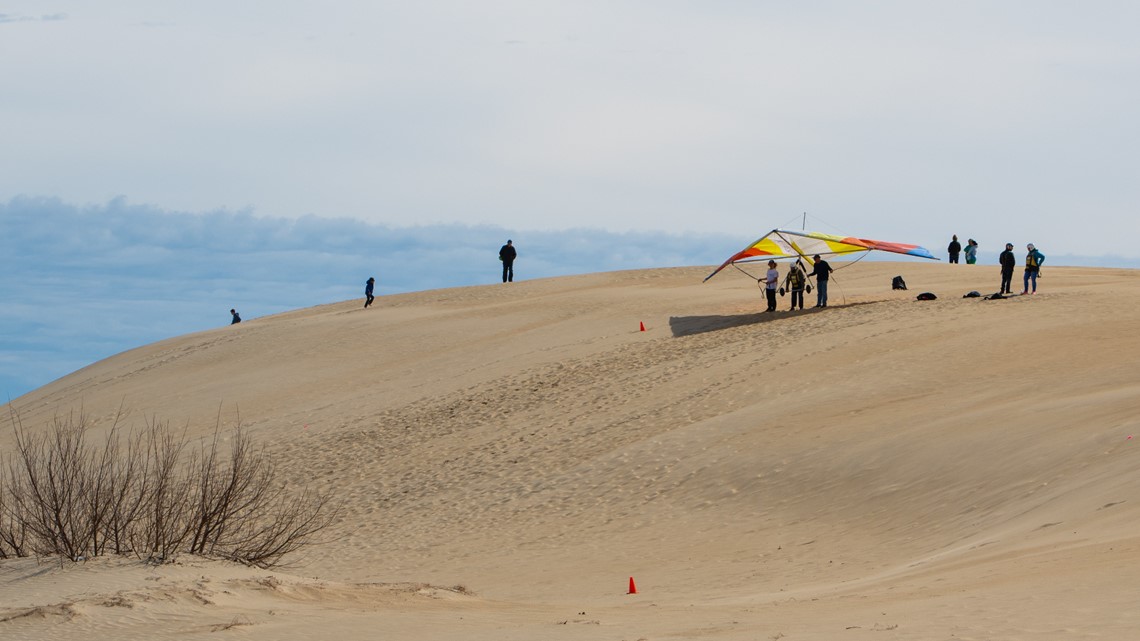
For those into hiking, the park has three trails: the Boardwalk with a partial view of the dunes, the Soundside Nature Trail and the Tracks in the Sand Trail marked throughout the dunes. Park rangers also lead interpretive programs, including guided hikes, to educate people about the park's natural world.
Paul said one of the biggest attractions on the Outer Banks is sunset viewing at Jockey's Ridge, which people fill up the parking lot for between Memorial Day and Labor Day.
It's also worth mentioning that there's no entry fee to get into this state park, but with the steep dunes, strong winds and seasonally hot temperatures, a visit will require good stamina and awareness. Paul offered several safety tips:
- If going alone or with a group, make a game plan for your trip. Contact a park ranger or staff member to get oriented.
- When hiking out, choose a few landmarks to make sure you can get back to where you started.
- Stay hydrated and have water with you. Paul said heat emergencies are the main medical incidents during the summer months.
- Get to the park early to recreate. Avoid recreating in the middle of the day when it's hot outside.
- Have a good breakfast and a full stomach before coming.
- For those bringing a dog, be mindful of how hot the sand gets.
- Wear sunscreen and proper head coverage.
- If there's inclement weather in the area, wait for it to pass or come another time.
To sign up for events, programs and upcoming activities at Jockey's Ridge, visit the state park system's website.
Share your photos with 13News Now
Got some photos of the great outdoors to share with us? You can text 757.628.6200 or e-mail them to shareit@13NewsNow.com. We'd love to see your shots!

